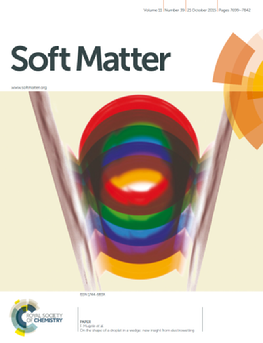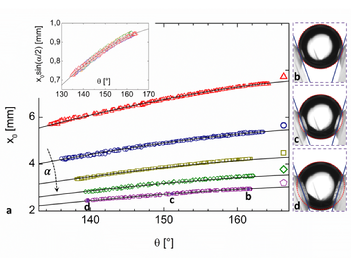Wedge-wetting: new publication in Soft Matter featured on Front Cover

The equilibrium morphology of liquid drops exposed to geometric constraints can be rather complex. Even for simple geometries, analytical solutions are scarce. PCF has previously shown morphology transition of liquid bridges in a sphere-plate geometry and how contact angle hysteresis affects the stability of droplet conformations (PRL, 2015). In our new publication by Davood Baratian et al. we study the morphology of a droplet in a wedge as a minimum example of liquid bridges in complex geometries. We analyze the equilibrium shape and position of a droplet inside a wedge under different wettability conditions using electrowetting and develop a descriptive model for the shape and position of the droplet. Our experiments are in very good agreement with this simple analytic model, showing that in the absence of gravity, the equilibrium shape of the droplet is always a section of a sphere. This implies that the drop does not exert any net force on the confining walls, confirming a general principle that was also found for the drops between a sphere and a plate.
The full text of the publication can be found here.

Series of images of the droplet, showing its position in the wedge at different voltages.

(a) The distance of the center of the drop from the wedge apex is plotted as a function of the contact angle . Data is shown for a water droplet of 4 µL in volume, and for five wedges with opening angles of 15° (red), 20° (blue), 26° (dark yellow), 32° (green), and 37° (purple). A comparison between our model predictions (solid black lines) and experimental results (scattered) is shown. Inset: Collapsed data on the master curve. (b), (c), (d): Circular fit (red lines) of the side profile of drop at three different positions in the wedge (θ ≃ 140°, 151°, 162°).





